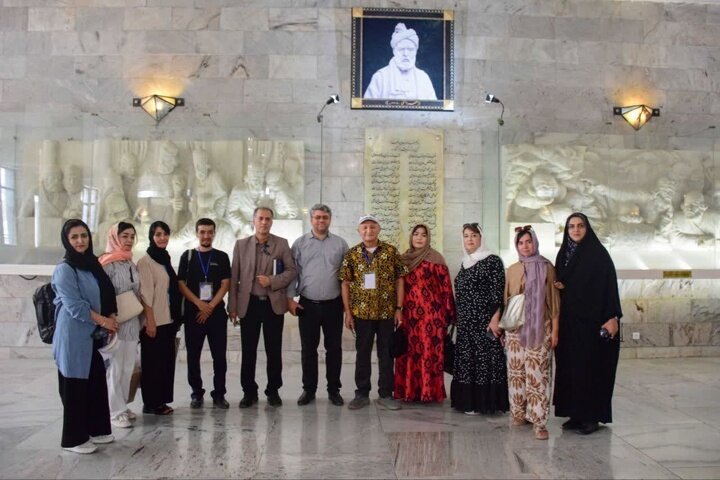Uzbekistan’s Persian language professors visit Ferdowsi Mausoleum

TEHRAN—Uzbekistan’s Persian language professors, while paying tribute to the great Iranian poet Hakim Abolqasem Ferdowsi, visited various parts of the Tus Cultural and Historical Complex in Khorasan Razavi province.
According to IRIB, the director of the Ferdowsi Cultural and Historical Complex said: The Persian language is the cultural common ground and the link between Iran and Uzbekistan, and it can play a significant role in cultural diplomacy between the two countries.
Referring to the visit of Uzbekistan’s Persian language professors to the Mausoleum of Hakim Abolqasem Ferdowsi, Reza Yousefi added that the visit was held in cooperation with Imam Reza International University and in line with cultural and scientific cooperation, with the aim of expanding and deepening literary and linguistic ties between the two nations
He also said that Ferdowsi, as the guardian of the Persian language, is one of the symbols that unite Tajikistan and Iran.
Ferdowsi was born in the village of Pazh, a part of the Tus region, in 940 CE. His childhood and youth were spent in the Samanid era, which was a dynasty that was friendly to Iran.
Before composing his masterpiece Shahnameh, Abu Mansur Muhammad ibn Abdol-Razzaq ordered the collection of scattered stories from the Shahnameh that were popular among the people and turned them into prose, which became known as the Shahnameh of Mansuri.
The Shahnameh of Mansuri was a suitable source and resource for others. At first, the poet Daqiqi took up the task of composing the Shahnameh. However, his early death did not allow him to compose more than 1,000 verses, and after him, Ferdowsi took up this task and completed the Shahnameh after 30 years of composing it.
Shahnameh is a narrative account of Iranian history and is still considered one of our most authoritative historical sources.
KD
